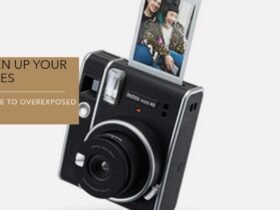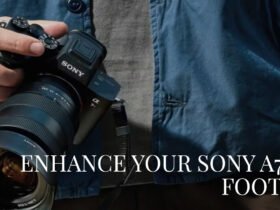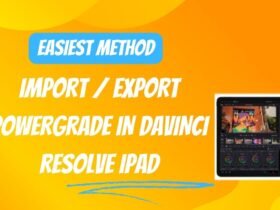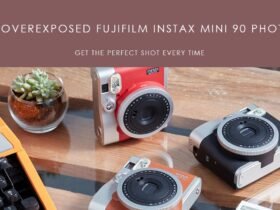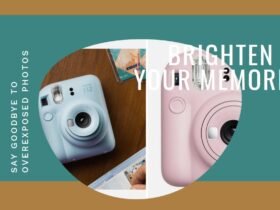In the fiercely competitive realm of professional photography, the Nikon Z9 has positioned itself as a top-of-the-line choice for many photo enthusiasts.
It offers a spectacular fusion of innovative technology, unparalleled performance, and impeccable image quality. But what if you’re searching for an alternative, perhaps a camera that aligns better with your specific needs, preferences, or budget? There’s a sea of options out there, each boasting its unique strengths and characteristics.
In this article, we delve into the top five Nikon Z9 alternatives that rival the Z9’s powerful features. Whether you’re a seasoned pro looking for an upgrade or a newbie aiming for a strong start, our comprehensive guide will help you navigate through the intricacies of today’s high-end camera market. Get ready to discover new horizons in the world of photography!
1. Canon EOS R3
The world of professional photography is filled with a plethora of options, each offering its unique blend of features, performance, and price.
Amongst these, the Canon EOS R3 has emerged as notable alternative for Nikon Z9. With comparable price points, these cameras pack a punch, offering a range of features designed to facilitate high-quality photography and videography.

1. Sensor: Full frame or APSC
Both cameras feature full-frame sensors, offering the larger sensor size preferred by professionals. The Nikon Z9 boasts a 45.7-megapixel sensor, while the Canon EOS R3 comes with a 24.1-megapixel sensor. Though the Z9 has a higher resolution, the R3’s sensor is nothing to sneeze at, offering excellent dynamic range and low light performance.
2. Autofocus
The autofocus performance of both cameras is exceptional. The Nikon Z9 features phase detection with 493 autofocus points, while the Canon R3 has an impressive 1053 autofocus points. Both cameras feature an autofocus sensitivity range that will cater to most shooting conditions, though the Canon R3 has a wider range (-7.5 to +20 EV compared to Nikon Z9’s -8.5 to +20 EV).
3. Speed
In terms of continuous shooting, the Nikon Z9 can shoot up to 30 frames per second at 45.7 MP, while the Canon R3 can shoot up to 30 frames per second at 24.1 MP. Both cameras offer rapid continuous shooting, allowing you to capture fast-paced action with ease.
4. Design- Dimension and Weight Comparison
From a design standpoint, both the Nikon Z9 and Canon EOS R3 boast a robust and ergonomic build, featuring a magnesium alloy construction that ensures durability and longevity. However, the EOS R3 is notably lighter, weighing around 1.8 lbs (822g) for the body only, compared to the Z9’s 2.6 lbs (1160g) for the body alone. This makes the R3 easier to carry around and handle, particularly during prolonged shooting sessions.
Regarding dimensions, the Z9 measures 5.9 x 5.9 x 3.6″ (149 x 149.5 x 90.5 mm), whereas the R3 is slightly more compact at 5.9 x 5.6 x 3.4″ (150 x 142.6 x 87.2 mm). The slight edge in compactness might make the R3 slightly more comfortable to handle.
5. Viewfinder and LCD monitor
Both cameras feature a built-in OLED electronic viewfinder (EVF) with 100% coverage, allowing for accurate framing and previewing of images. The EOS R3 boasts a slightly superior viewfinder resolution, with a 5.76-million-dot EVF compared to the Z9’s 3.69-million-dot EVF. This implies that the R3 offers a crisper and clearer viewfinder experience.
In terms of LCD monitors, both offer a rear touchscreen LCD. The Nikon Z9 has a 3.2″ LCD with 2.1 million dots, while the Canon EOS R3 flaunts a slightly larger 3.2″ LCD but with a much higher resolution of 4.15 million dots. The EOS R3 also benefits from an articulating screen design, providing more flexibility during shooting compared to the Z9’s 4-axis tilting screen.
6. Battery life
Battery life is a crucial aspect of any camera, and in this respect, the Nikon Z9 has a slight edge. The Z9’s EN-EL18d battery promises approximately 700 shots, compared to the R3’s LP-E19 that delivers fewer shots per charge. However, the actual battery life can significantly vary depending on the shooting conditions and settings used.
7. Video Capabilities
When it comes to video, the Nikon Z9 is a powerhouse. It offers 8K UHD recording and 4K UHD up to 120 fps, allowing for incredible detail and smooth slow-motion footage. The Z9 also supports 10-bit 4:2:2 recording and RAW video output for maximum color grading flexibility.
On the other hand, the EOS R3 supports 4K UHD video recording and has an advantage in high-speed Full HD recording, offering up to 120 fps. It also supports 10-bit 4:2:2 internal recording and RAW video output, providing similar color grading flexibility to the Z9. However, it does not offer 8K video capabilities like the Z9.
8. Lens Mount and Availability
Both the Nikon Z9 and Canon EOS R3 are part of their respective companies’ mirrorless systems, with the Z9 using the Nikon Z mount and the R3 utilizing the Canon RF mount. Both mounts have a growing selection of high-quality lenses, covering a wide range of focal lengths and apertures. The choice between the two would primarily depend on whether you already have a collection of Nikon Z or Canon RF lenses or if you have specific lens requirements.
9. Price
In terms of price, both cameras are similarly priced around $5500, which is typical for high-end, professional-grade cameras. Your choice would therefore rely more on your specific needs and brand preference rather than price.
2. Sony a1
Nikon Z9 and Sony A1 stand as flagships in the digital photography world, replete with features that appeal to the most discerning professionals. Both offer high-resolution full-frame sensors, sophisticated autofocus systems, speed, and extensive video capabilities.
Despite their similarities, they have distinct characteristics that could tip the balance according to specific user requirements. Let’s compare both cameras and see how Sony a1 can be a good alternative to Nikon Z9.

1. Sensor: Full Frame or APSC
The Nikon Z9 and Sony A1 both sport full-frame sensors. The Z9 is equipped with an effective 45.7-megapixel backside-illuminated (BSI) CMOS sensor that provides a wide dynamic range and excellent low-light capabilities.
On the other hand, the Sony A1 offers a slight advantage with its 50.1-megapixel Exmor RS stacked CMOS sensor, designed for faster readout speeds and reduced rolling shutter. Both cameras incorporate sensor-shift, 5-axis image stabilization systems, assisting in reducing the effects of camera shake.
2. Autofocus
The Nikon Z9 comes with a 493 point phase-detection autofocus system covering nearly 100% of the frame. This system boasts an impressive autofocus sensitivity range of -8.5 to +20 EV, assuring sharp focus in various lighting conditions.
On the other hand, the Sony A1 showcases its advanced Real-time Eye AF and Bird Eye AF capabilities, along with improved real-time tracking that leverages AI for subject recognition, although the exact number of autofocus points isn’t stated in the provided specs.
3. Speed
Speed is essential in professional photography, and both cameras deliver remarkable continuous shooting capabilities.
The Nikon Z9 offers up to 20 fps at full 45.7 MP resolution for up to 1000 frames in Raw format, and it can hit a staggering 120 fps at 11 MP. Comparatively, the Sony A1 outperforms with 30 fps continuous shooting at full 50.1 MP resolution for up to 155 frames in Raw format.
4. Design: Dimension and Weight Comparison
The Nikon Z9, measuring 149 x 149.5 x 90.5 mm and weighing in at 1340g (with battery and recording media), is bulkier and heavier than the Sony A1, which measures 128.9 x 96.9 x 80.8 mm and weighs only 737g (with battery and recording media). The larger size and weight of the Nikon Z9 can be an advantage or disadvantage, depending on the type of shooting scenario.
5. Viewfinder and LCD Monitor
Each camera features an OLED electronic viewfinder (EVF), with the Nikon Z9 slightly surpassing the Sony A1 in resolution (3,690,000 dots versus 3,680,000 dots). As for the LCD monitor, the Sony A1 uses a 3.0-inch tilting touchscreen LCD.
The Nikon Z9, however, incorporates a slightly larger 3.2-inch 4-axis tilting touchscreen LCD, which provides more flexibility for various shooting angles.
6. Battery Life
The Nikon Z9 is powered by an EN-EL18d rechargeable lithium-ion battery, providing an estimated 700 shots per charge, making it an excellent choice for extended shooting sessions. Unfortunately, the specific battery performance data for the Sony A1 wasn’t provided in the given specs.
7. Video Capabilities
Both cameras excel in their video capabilities, with the capacity to record 8K UHD video. Nevertheless, the Sony A1 edges out with additional internal recording modes and the ability to record uncompressed 16-bit raw video via its HDMI output.
8. Connectivity Options
Both Nikon Z9 and Sony A1 offer various connectivity options for the convenience of users. Both have built-in Wi-Fi and Bluetooth for seamless wireless sharing and control. They are also equipped with USB Type-C ports for data transfer and charging. The Sony A1 includes a wired LAN port, which can be useful for studio photographers or those requiring high-speed data transfer.
9. Durability and Weather Sealing
As professional-grade cameras, both the Nikon Z9 and Sony A1 are built to last, boasting durable magnesium alloy bodies. They also feature extensive weather sealing to protect against dust and moisture, ensuring they can perform in a variety of challenging environments.
10. Lens Selection
Lens selection can be a critical factor when choosing a camera system. Both Nikon and Sony have a diverse range of lenses available for their respective camera systems. The Nikon Z mount offers a growing range of high-quality lenses, including prime, zoom, and specialty lenses.
On the other hand, Sony’s E-mount system has a more extensive and mature lens lineup, with options for every type of photography.
11. Price
When considering the price, it is important to note that the Nikon Z9 is priced at $5,496, while the Sony A1 is priced slightly higher at $6,498. The price difference between the two cameras may play a role in the decision-making process for some photographers.
While the Nikon Z9 offers exceptional image quality, advanced autofocus capabilities, and impressive shooting speeds, the Sony A1 justifies its higher price with its cutting-edge features such as the stacked CMOS sensor, faster burst shooting, and extensive video capabilities.
Ultimately, the choice between the Nikon Z9 and Sony A1 will depend on individual preferences, shooting requirements, and budget considerations. Both cameras provide outstanding performance and are well-regarded in the professional photography community.
3. Sony a7 IV
The Sony a7 IV stands as a strong contender and a viable alternative to the Nikon Z9, offering impressive features and performance at a more accessible price point.
With its full-frame sensor, advanced autofocus system, high-speed shooting capabilities, and versatile video capabilities, the Sony a7 IV caters to the needs of both professional photographers and videographers. In this detailed comparison, we will explore the key specifications and features of both cameras to highlight why the Sony a7 IV can be considered as a compelling alternative to the Nikon Z9.

1. Sensor
Both the Sony a7 IV and Nikon Z9 feature a full-frame CMOS sensor, ensuring excellent image quality, dynamic range, and low-light performance. The Sony a7 IV offers an actual resolution of 34.1 megapixels, while the Nikon Z9 boasts an impressive 52.37-megapixel sensor.
While the Nikon Z9 provides a higher resolution, the Sony a7 IV’s 33-megapixel sensor still delivers outstanding image quality and ample resolution for most professional applications.
2. Autofocus
The autofocus systems of both cameras are highly advanced, with the Nikon Z9 featuring 493 phase-detection autofocus points and the Sony a7 IV offering an impressive 759 phase-detection and 425 contrast-detection autofocus points. Both cameras excel in subject tracking, eye autofocus, and face detection, ensuring accurate and reliable autofocus performance in various shooting conditions.
The extensive autofocus coverage of the Sony a7 IV provides excellent versatility and precision for capturing fast-moving subjects or shooting in challenging environments.
3. Speed
The Sony a7 IV offers impressive speed capabilities, with continuous shooting of up to 10 frames per second (fps) for up to 828 frames in raw format or unlimited frames in JPEG format.
The Nikon Z9, on the other hand, provides even faster continuous shooting, reaching up to 20 fps at 45.7 megapixels for up to 1000 frames in raw format. The high-speed shooting capabilities of both cameras make them well-suited for capturing fast action and fleeting moments.
4. Design
Dimension and Weight Comparison In terms of design, the Sony a7 IV and Nikon Z9 have distinct characteristics. The Sony a7 IV features a compact and lightweight body, measuring approximately 5.2 x 3.8 x 3.1 inches (131.3 x 96.4 x 79.8 mm) and weighing 1.4 lb (658 g) with the battery and recording media. The Nikon Z9 is slightly larger and heavier, with dimensions of approximately 5.9 x 5.9 x 3.6 inches (149 x 149.5 x 90.5 mm) and a weight of 2.9 lb (1340 g) with the battery and recording media.
The smaller and lighter form factor of the Sony a7 IV makes it more portable and convenient for on-the-go shooting or extended handheld use.
5. Viewfinder and LCD Monitor
Both cameras feature high-resolution electronic viewfinders (EVFs) that provide a clear and detailed preview of the scene.
The Nikon Z9 has a 0.5-inch OLED EVF with a resolution of 3,690,000 dots, offering a comfortable viewing experience. The Sony a7 IV also boasts a 0.5-inch OLED EVF, but with a slightly higher resolution of 3,680,000 dots. Additionally, both cameras offer tilting LCD screens that provide flexible positioning for shooting from various angles. The Sony a7 IV sports a 3.0-inch free-angle tilting touchscreen LCD with a resolution
of 1,036,800 dots, while the Nikon Z9 features a larger 3.2-inch 4-axis tilting touchscreen LCD with a higher resolution of 2,100,000 dots.
Both cameras offer intuitive touch control for menu navigation, focus selection, and image playback, enhancing the overall user experience.
6. Battery Life
Battery life is an essential consideration for photographers, especially when shooting for extended periods or in remote locations. The Sony a7 IV comes equipped with an NP-FZ100 rechargeable lithium-ion battery that offers an impressive shooting capacity of approximately 520 shots per charge.
On the other hand, the Nikon Z9 utilizes an EN-EL18d rechargeable lithium-ion battery, providing a higher shooting capacity of approximately 700 shots per charge. While the Nikon Z9 offers a slightly longer battery life, both cameras provide sufficient power for most shooting scenarios, and the Sony a7 IV’s battery performance is commendable.
7. Video Capabilities
Both the Sony a7 IV and Nikon Z9 offer outstanding video capabilities, making them suitable choices for videographers. The Nikon Z9 supports internal recording in various formats, including H.265 4:2:2 10-bit and ProRes 422 HQ 4:2:2 10-bit. It can capture stunning UHD 8K (7680 x 4320) video at different frame rates and resolutions, providing exceptional detail and clarity. Similarly, the Sony a7 IV supports internal recording in H.265/XAVC HS 4:2:2 10-bit, delivering UHD 4K (3840 x 2160) video at 23.98/50/59.94 fps.
While the Nikon Z9 offers higher resolution options, the Sony a7 IV’s video capabilities are still impressive, especially considering its more affordable price point.
8. Lens Mount and Availability
Both the Sony a7 IV and Nikon Z9 feature versatile lens mounts that allow for a wide range of lens options. The Sony a7 IV utilizes the Sony E-mount system, which provides access to a vast selection of high-quality lenses from Sony and third-party manufacturers. The Nikon Z9 employs the Nikon Z-mount system, which also offers an expanding lineup of lenses designed specifically for the Z series cameras.
Both lens ecosystems provide excellent options for photographers and videographers, ensuring compatibility with various focal lengths and specialized lenses for different shooting scenarios.
9. Price
Price is often a crucial factor when considering camera options. The Sony a7 IV is priced at approximately $2,500, positioning it as a more accessible and budget-friendly alternative to the Nikon Z9, which retails for around $5,496.
The significant price difference makes the Sony a7 IV an attractive choice for photographers who seek exceptional performance and features without the higher cost associated with flagship cameras.
4. Panasonic Lumix S1H
When searching for a high-end camera like the Nikon Z9, it’s worth exploring alternatives that offer comparable performance and features at a more affordable price. The Panasonic Lumix S1H emerges as a strong contender, providing impressive specifications and capabilities.
In this detailed analysis, we will compare the Panasonic Lumix S1H to the Nikon Z9 across various key aspects to demonstrate why it can be considered a good alternative.

1. Sensor: Full Frame
Both the Panasonic Lumix S1H and Nikon Z9 feature full-frame sensors, ensuring excellent image quality, dynamic range, and low-light performance. The Panasonic S1H utilizes a 24.2-megapixel full-frame CMOS sensor, while the Nikon Z9 boasts a higher resolution with a 45.7-megapixel full-frame CMOS sensor. Although the Nikon Z9 offers a higher resolution, the Panasonic S1H’s sensor is more than capable of delivering stunning image quality and detail.
2. Autofocus
The autofocus systems of both cameras are highly advanced. The Nikon Z9 employs a phase-detection autofocus (AF) system with 493 AF points, providing fast and accurate subject tracking.
Similarly, the Panasonic S1H utilizes a contrast-detection AF system with 225 AF points, ensuring precise focusing. While the Nikon Z9 may have a slight advantage in terms of AF points, both cameras deliver excellent autofocus performance.
3. Speed
In terms of speed, the Nikon Z9 offers impressive continuous shooting capabilities. It can shoot up to 20 frames per second (fps) at the full 45.7-megapixel resolution and up to 30 fps with a slight crop.
On the other hand, the Panasonic S1H offers up to 9 fps at the full 24.2-megapixel resolution, making it slightly slower in terms of continuous shooting. However, both cameras provide sufficient speed for most photography needs.
4. Design: Dimension and Weight Comparison
The Nikon Z9 measures 5.9 x 5.9 x 3.6 inches and weighs approximately 2.9 pounds with the battery and recording media. Comparatively, the Panasonic S1H has slightly larger dimensions at 5.94 x 4.5 x 4.35 inches but is slightly lighter at approximately 2.56 pounds with the battery and recording media.
Despite these slight differences, both cameras offer a robust and ergonomic design, ensuring comfortable handling and durability.
5. Viewfinder and LCD Monitor
Both the Panasonic S1H and Nikon Z9 feature high-resolution electronic viewfinders (EVFs) and tilting LCD monitors. The Panasonic S1H is equipped with a built-in electronic viewfinder with a resolution of 5,760,000 dots, offering a detailed and immersive viewing experience. The Nikon Z9 also features a high-resolution EVF with a resolution of 3,690,000 dots.
In terms of LCD monitors, the Panasonic S1H has a 3.2-inch free-angle tilting touchscreen LCD with a resolution of 2,330,000 dots, while the Nikon Z9 features a larger 3.2-inch 4-axis tilting touchscreen LCD with a higher resolution of 2,100,000 dots. Both cameras provide intuitive touch control for enhanced usability.
6. Battery Life
The battery life of a camera is crucial for extended shooting sessions. The Nikon Z9 utilizes an EN-EL18d rechargeable lithium-ion battery, providing a shooting capacity of approximately 700 shots per charge. On the other hand, the Panasonic S1H is equipped with
The Panasonic S1H is equipped with a DMW-BLJ31 rechargeable lithium-ion battery, which offers a shooting capacity of approximately 400 shots per charge. While the Nikon Z9 has a slightly higher battery capacity, the Panasonic S1H’s battery life is still sufficient for most shooting scenarios. Additionally, both cameras support USB charging, allowing for convenient power replenishment on the go.
7. Video Capabilities
Both the Panasonic S1H and Nikon Z9 excel in video capabilities. The Nikon Z9 can record up to 8K UHD (7680 x 4320) video at various frame rates, including 23.98, 25, and 29.97 fps. It also offers ProRes 422 HQ 4:2:2 10-bit recording in UHD 4K (3840 x 2160) resolution. Similarly, the Panasonic S1H is renowned for its video capabilities, supporting 6K video recording at 24 fps and 4K video recording at up to 60 fps.
It offers various professional-grade features, including V-Log, 10-bit internal recording, and anamorphic shooting modes. Both cameras deliver exceptional video quality and extensive creative options.
8. Lens Mount and Availability
The Nikon Z9 features a Nikon Z lens mount, providing access to an ever-growing lineup of high-quality lenses designed specifically for the Z series cameras. Nikon has been expanding its lens offerings to cater to a wide range of photography and videography needs.
On the other hand, the Panasonic S1H utilizes the Leica L-mount, which offers compatibility with a wide selection of lenses from Panasonic, Leica, and Sigma. The L-mount alliance has been rapidly expanding, ensuring a diverse range of lens options for the Panasonic S1H.
9. Price
Price is a significant factor when considering camera alternatives. The Nikon Z9 is priced at $5,496, positioning it in the premium range of the market. In contrast, the Panasonic S1H is priced at $3,500, offering a more affordable option without compromising on performance and features.
The price difference makes the Panasonic S1H an attractive alternative for those seeking a high-end camera with advanced capabilities at a more accessible price point.
5. Canon EOS R5
When it comes to high-performance cameras, the Nikon Z9 is undoubtedly an impressive choice.
However, for those seeking an alternative with similar capabilities and features, the Canon EOS R5 proves to be a worthy contender. Packed with advanced technology and an array of cutting-edge specifications, the Canon EOS R5 offers photographers and videographers a versatile tool for capturing stunning imagery.
We will explore the Canon EOS R5 as a good alternative to the Nikon Z9, comparing their key features and discussing why the Canon EOS R5 is a compelling option for professionals and enthusiasts alike.

1. Sensor: Full Frame
Both the Canon EOS R5 and Nikon Z9 feature full-frame sensors, ensuring exceptional image quality and low-light performance. The Canon EOS R5 boasts a 45-megapixel full-frame CMOS sensor, while the Nikon Z9 offers a slightly higher resolution at 45.7 megapixels.
With these sensors, both cameras can produce highly detailed images with rich color reproduction, enabling photographers to capture stunning landscapes, portraits, and various other genres of photography.
2. Autofocus: Precision and Speed
In terms of autofocus capabilities, both the Canon EOS R5 and Nikon Z9 excel. The Canon EOS R5 utilizes Dual Pixel CMOS AF II technology, providing 1053 autofocus points covering a wide area of the frame.
This advanced autofocus system delivers fast, accurate, and reliable focusing performance, ideal for capturing moving subjects and maintaining focus in various shooting scenarios. Similarly, the Nikon Z9 features a sophisticated autofocus system with 493 phase-detection autofocus points, ensuring precise subject tracking and enhanced focusing speed. Whether it’s fast-paced action or still subjects, both cameras offer remarkable autofocus performance.
3. Speed: Burst Shooting and Continuous Shooting
When it comes to speed, the Canon EOS R5 and Nikon Z9 offer impressive capabilities. The Canon EOS R5 can shoot up to 12 frames per second (fps) with its mechanical shutter and up to 20 fps with its electronic shutter.
This high-speed shooting enables photographers to capture fast-moving subjects with ease. On the other hand, the Nikon Z9 offers even greater speed, with burst shooting at up to 20 fps using its mechanical shutter and an astonishing 30 fps using its electronic shutter. These fast continuous shooting rates allow photographers to capture decisive moments and ensure they don’t miss any action.
4. Design: Dimension and Weight Comparison
In terms of design, the Canon EOS R5 and Nikon Z9 exhibit their unique characteristics. The Canon EOS R5 features a compact and ergonomic design, measuring approximately 5.43 x 3.84 x 3.46 inches (138 x 97.5 x 88 mm) and weighing around 1.62 pounds (738 g) with the battery and recording media included.
On the other hand, the Nikon Z9 is slightly larger, measuring approximately 5.9 x 5.9 x 3.6 inches (149 x 149.5 x 90.5 mm) and weighing approximately 2.9 pounds (1340 g) with the battery and recording media. While the Nikon Z9 is slightly bulkier, both cameras are built to be durable, utilizing magnesium alloy construction for enhanced ruggedness and weather sealing for protection against dust and moisture.
5. Viewfinder and LCD Monitor
Both the Canon EOS R5 and Nikon Z9 feature advanced electronic viewfinders (EVFs) and LCD monitors. The Canon EOS R5 is equipped with a built-in electronic OLED viewfinder with a size of 0.5 inches and a resolution of 5,760,000 dots. This EVF provides a high-resolution and detailed view of the scene, allowing photographers to preview their shots accurately.
Additionally, the Canon EOS R5 sports a 3.2-inch free-angle tilting touchscreen LCD with a resolution of 2,100,000 dots. This versatile LCD monitor enables users to compose their shots from various angles and easily navigate through menus and settings.
Similarly, the Nikon Z9 features a built-in OLED electronic viewfinder with a size of 0.5 inches and a resolution of 3,690,000 dots. The EVF offers a high-resolution and bright view, ensuring photographers can accurately preview their images. The camera also incorporates a 3.2-inch 4-axis tilting touchscreen LCD with a resolution of 2,100,000 dots. This LCD monitor provides flexibility in shooting positions and allows for intuitive control and menu navigation.
6. Battery Life
Battery life is a crucial factor for photographers, particularly those who engage in long shooting sessions or events.
The Canon EOS R5 is powered by the LP-E6NH rechargeable lithium-ion battery, which offers an impressive battery life of approximately 700 shots per charge. This enables photographers to shoot extensively without worrying about running out of power.
The Nikon Z9 utilizes the EN-EL18d rechargeable lithium-ion battery, which provides a similar battery life of approximately 700 shots per charge. Both cameras offer reliable battery performance, ensuring photographers can focus on capturing their desired shots without interruptions.
7. Video Capabilities
Both the Canon EOS R5 and Nikon Z9 excel in terms of video capabilities, making them highly suitable for videographers.
The Canon EOS R5 is capable of recording 8K DCI (8192 x 4320) and 4K UHD (3840 x 2160) videos, utilizing the efficient H.265 codec in 10-bit color depth. It also supports internal recording of 4K footage in Canon Log and Canon Log 3 profiles, providing greater flexibility in post-production grading. Additionally, the camera features advanced image stabilization, ensuring smooth footage even when shooting handheld.
Similarly, the Nikon Z9 offers exceptional video recording capabilities. It can record 8K DCI (8192 x 4320) and 4K UHD (3840 x 2160) videos, supporting 10-bit color depth in H.265 format. The camera also provides various frame rate options and supports slow-motion recording in both 4K and Full HD resolutions. Additionally, the Nikon Z9 features in-body image stabilization, contributing to stable footage while shooting handheld.
8. Lens Mount and Availability
The Canon EOS R5 features the Canon RF lens mount, which offers a wide range of native lenses specifically designed for the RF mount. Canon has developed an extensive lineup of RF lenses, including high-quality primes, zooms, and specialized lenses, catering to the diverse needs of photographers and videographers. Additionally, Canon provides compatibility with EF lenses through the use of an adapter, expanding the available lens options even further.
On the other hand, the Nikon Z9 features the Nikon Z mount, which also offers a growing selection of native lenses.
Nikon has been steadily expanding its Z mount lens lineup, providing photographers with versatile options for various genres of photography. Nikon Z mount lenses are known for their optical excellence and superb build quality, ensuring photographers can achieve the highest image quality possible.
9. Price
Price is an important consideration for many photographers when choosing between camera options. The Nikon Z9 is priced at $5,496, positioning it as a premium and high-end camera option. On the other hand, the Canon EOS R5 is priced at $3,399, offering a more accessible price point while still delivering exceptional performance and features.
In conclusion, while the Nikon Z9 is a highly impressive camera, there are several alternatives worth considering. Each offers its own unique features and capabilities that make them strong contenders in the professional camera market.
- Also Read: Top 5 Canon M50 Mark II Alternatives
- Also Read: Top 5 Sony ZV-E10 Alternatives
- Also Read: Top 5 Sony A6400 Alternatives



